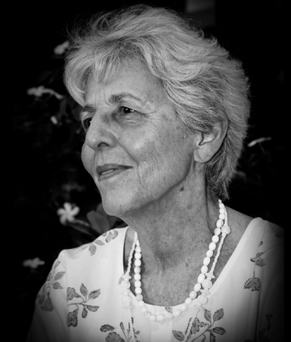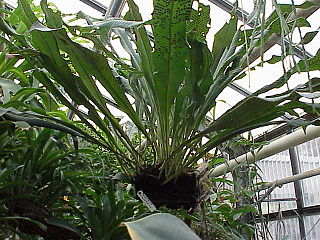
Barro Colorado Island is located in the man-made Gatun Lake in the middle of the Panama Canal. The island was formed when the waters of the Chagres River were dammed to form the lake in 1913. When the waters rose, they covered a significant part of the existing tropical forest, but certain hilltops remained as islands in the middle of the lake. It has an area of 15.6 km2 (6.0 sq mi).
Insular biogeography or island biogeography is a field within biogeography that examines the factors that affect the species richness and diversification of isolated natural communities. The theory was originally developed to explain the pattern of the species–area relationship occurring in oceanic islands. Under either name it is now used in reference to any ecosystem that is isolated due to being surrounded by unlike ecosystems, and has been extended to mountain peaks, seamounts, oases, fragmented forests, and even natural habitats isolated by human land development. The field was started in the 1960s by the ecologists Robert H. MacArthur and E. O. Wilson, who coined the term island biogeography in their inaugural contribution to Princeton's Monograph in Population Biology series, which attempted to predict the number of species that would exist on a newly created island.

The Smithsonian Tropical Research Institute is located in Panama and is the only bureau of the Smithsonian Institution based outside of the United States. It is dedicated to understanding the past, present, and future of tropical ecosystems and their relevance to human welfare. STRI grew out of a small field station established in 1923 on Barro Colorado Island in the Panama Canal Zone to become one of the world's leading tropical research organizations. STRI's facilities provide for long-term ecological studies in the tropics and are used by some 1,200 visiting scientists from academic and research institutions around the world every year.
Stephen P. Hubbell is an American ecologist on the faculty of the University of California, Los Angeles. He is author of the unified neutral theory of biodiversity and biogeography (UNTB), which seeks to explain the diversity and relative abundance of species in ecological communities not by niche differences but by stochastic processes among ecologically equivalent species. Hubbell is also a senior staff scientist at the Smithsonian Tropical Research Institute in Balboa, Panama. He is also well known for tropical forest studies. In 1980, he and Robin B. Foster of the Field Museum in Chicago, launched the first of the 50 hectare forest dynamics studies on Barro Colorado Island in Panama. This plot became the flagship of a global network of large permanent forest dynamics plots, all following identical measurement protocols. This global network now has more than 70 plots in 28 countries, and these plots contain more than 12000 tree species and 7 million individual trees that are tagged, mapped, and monitored long-term for growth, survival and recruitment. The Center for Tropical Forest Science coordinates research across global network of plots through the Smithsonian Tropical Research Institute. The program has expanded into the temperate zone, and is now known as the Forest Global Earth Observatory Network or ForestGEO.

Martin Humphrey Moynihan was a behavioral evolutionary biologist and ornithologist who studied under Ernst Mayr and Niko Tinbergen, and was a contemporary of Desmond Morris. He was the founding director of the Smithsonian Tropical Research Institute (STRI) in Panama.
The Organization for Tropical Studies (OTS)/Organización para Estudios Tropicales (OET), founded in 1963, is a non-profit consortium of over 50 universities and research institutions based in the United States, Latin America, and South Africa. OTS manages a network of ecological research stations in Costa Rica and South Africa. The North American Office is located on the Duke University campus in Durham, North Carolina. OTS offers a variety of courses in Spanish and English for high school, university, graduate students and professionals. Most of the coursework and research conducted at OTS stations focuses on tropical ecology, and the three research stations in Costa Rica are located in distinct ecoregions. OTS provides housing and a cafeteria for students researchers, and sometime ecotourists. OTS is involved in the policy related to tropical biology through courses, hosting meetings and conferences and managing conservation related projects

Elisabeth Klara Viktoria Kalko was a German tropical scientist and ecologist working at the Smithsonian Institution and the University of Ulm.
Tropical ecology is the study of the relationships between the biotic and abiotic components of the tropics, or the area of the Earth that lies between the Tropic of Cancer and the Tropic of Capricorn. The tropical climate experiences hot, humid weather and rainfall year-round. While many might associate the region solely with the rainforests, the tropics are home to a wide variety of ecosystems that boast a great wealth of biodiversity, from exotic animal species to seldom-found flora. Tropical ecology began with the work of early English naturalists and eventually saw the establishment of research stations throughout the tropics devoted to exploring and documenting these exotic landscapes. The burgeoning ecological study of the tropics has led to increased conservation education and programs devoted to the climate.

Olga Francesca Linares was a Panamanian–American academic anthropologist and archaeologist, and senior staff scientist (emerita) at the Smithsonian Tropical Research Institute (STRI) in Panama, who supported much of her research throughout her career. She is well known for her work on the cultural ecology of Panama, and more recently in the Casamance region of Southern Senegal. She is also concerned with the social organization of agrarian systems as well as the relationship between "ecology, political economy, migration and the changing dynamics of food production among rural peoples living in tropical regions".

Tachigali versicolor or the suicide tree is a species of tree found from Costa Rica to western Colombia. It is monocarpic, flowering only once before dying, which gives rise to its common name of the "suicide tree".

Platypodium elegans, the graceful platypodium, is a large leguminous tree found in the Neotropics that forms part of the forest canopy. It was first described by Julius Rudolph Theodor Vogel in 1837 and is the type species of the genus. The tree has been known to grow up to 30 metres in height and have a trunk with a diameter up to 1 m at breast height. Its trunk has large holes in it, sometimes making it possible to see through the trunk. The holes provide a habitat for giant damselflies and other insects both when alive and once the tree has died and fallen over. It has compound leaves each of which is made up of 10–20 leaflets. Three new chemical compounds have been isolated from the leaves and they form part of the diet of several monkeys and the squirrel Sciurus ingrami. In Panama it flowers from April to June, the flowers contain only four ovules, but normally only one of these reaches maturity forming a winged seed pod around 10 cm long and weighing 2 g. During the dry season around a year after the flowers are fertilised, the seeds are dispersed by the wind and the tree loses it leaves. The seeds are eaten by agoutis and by bruchid beetle larvae. The majority of seedlings are killed by damping off fungi in the first few months of growth, with seedlings that grow nearer the parent trees being more likely to die. The seedlings are relatively unable to survive in deep shade compared to other species in the same habitat. Various epiphytes are known to grow on P. elegans with the cactus Epiphyllum phyllanthus being the most abundant in Panama. Despite having holes in its trunk which should encourage debris and seeds to collect, hemiepiphytes are relatively uncommon, meaning that animals are not attracted to it to feed and then defecate. It has no known uses in traditional medicine and although it can be used for timber, the wood is of poor quality.

Niphidium crassifolium, commonly known as the graceful fern, is a species of fern in the family Polypodiaceae found in Central and South America. It is predominantly epiphytic, growing on other plants—for example, in the canopies of trees—but occasionally grows on rocks or on the ground, particularly at higher altitude. It has a rhizome from which many fine rootlets covered in dark reddish-brown scales grow. Together they form a root basket that, when growing on trees, helps to trap leaf litter and dust, forming a nutrient-rich soil that holds water. Its leaves are simple in shape, 13–85 centimetres (5–33 in) long and 3–5 centimetres (1.2–2.0 in) wide and when dry, and covered by a wax-like film. The sori are round and large, occurring in single rows between veins at the far end of the leaf.

Ira Rubinoff is an American marine biologist and was a former director of the Smithsonian Tropical Research Institute in Panama.
Christian Ziegler is a German photojournalist, BBC Wildlife Photographer of the Year in 2005, and regular contributor to National Geographic. He is known for his photography at the Smithsonian Tropical Research Institute and a forest in Barro Colorado Island, which was used in a science book called A Magic Web, published by Oxford University Press in 2002. Later on, he collaborated with Egbert Leigh as a co-author and together they published a book of orchids which was published in 2011 by University of Chicago Press. Currently he is a member of the Photo Society.
Jennifer S. Powers is an American ecologist and full professor in the departments of ecology, evolution and behavior, and plant and microbial biology at the University of Minnesota. Powers' research has advanced the understanding of global change consequences, ecosystem ecology, restoration and conservation of tropical dry forests. She also has been very active on several editorial boards, and in 2019 became the editor-in-chief of Biotropica, a scientific journal from the Association of Tropical Biology and Conservation (ATBC).
Jose Cuatrecasas Medal for Excellence in Tropical Botany was initiated in 2001 by the Smithsonian National Museum of Natural History, USA. It is named after José Cuatrecasas, a pioneering botanist and taxonomist who worked on the flora of tropical South America. It is awarded annually to a scientist who has made a very significant contribution to advancing the field of tropical botany. Nominations for the award can be made by all in the Botany Department at the museum.
Annette A. Aiello is an American zoologist, botanical entomologist, and professor. She develops academic activities at the Smithsonian Tropical Research Institute.

Sericopelma embrithes is a tarantula that is native to Panama. To date, only specimens from Barro Colorado Island have been studied. Like other tarantulas, it is relatively large compared to other spiders. It can grow up to 59 mm long, including its chelicerae. S. embrithes is data deficient according to the IUCN.
Robin B. Foster is a botanist studying tropical forests. He co-originated the "tropical forest dynamics plot".
Margaret Chatham Crofoot is an American anthropologist who is a professor at the University of Konstanz and the Max Planck Institute of Animal Behavior. Her research considers the behavior and decision making of primates. She was appointed an Alexander von Humboldt Professor in 2019.











